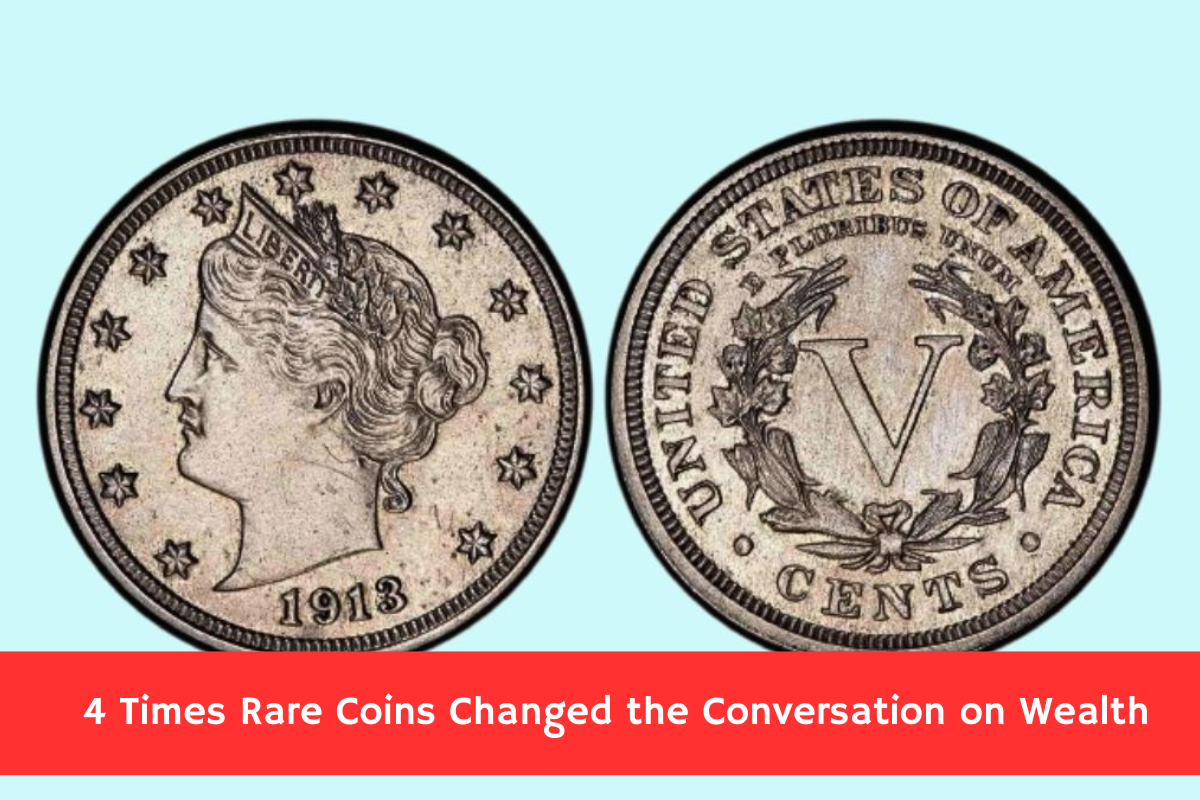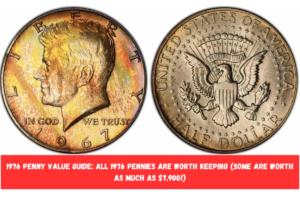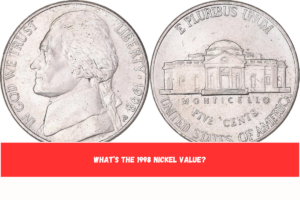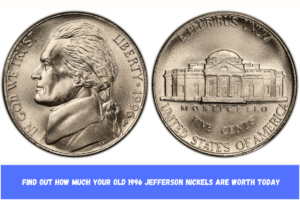Rare coins have long fascinated collectors, investors, and historians, not just for their monetary value but also for the stories they tell about economic, cultural, and historical shifts. Throughout history, specific rare coins have captured the public’s imagination, reshaping our understanding of wealth and influencing financial decisions. Let’s explore four pivotal moments when rare coins changed the conversation on wealth, leaving lasting impacts on the world of finance and numismatics.
1. The Sale of the 1933 Saint-Gaudens Double Eagle

The 1933 Saint-Gaudens Double Eagle is one of the most legendary coins in American history. Initially minted during the Great Depression, this $20 gold piece represents a turbulent time in U.S. economic history when President Franklin D.
Roosevelt ordered all gold coins to be melted down to stabilize the economy. As a result, only a handful of these coins survived, making them extraordinarily rare.
- Turning Point: The conversation on wealth took a dramatic turn in 2002 when one of these coins sold at auction for $7.59 million, setting a record for the highest price ever paid for a coin at that time. The sale underscored the notion that wealth is not merely a function of the face value or composition of a coin but also its historical significance, rarity, and the intrigue surrounding it.
- Cultural Impact: The staggering auction price brought the world of rare coin collecting into the mainstream media, highlighting that rare coins could be powerful assets in an investment portfolio. The 1933 Saint-Gaudens Double Eagle became a symbol of the allure and financial potential of numismatics.
2. The Brasher Doubloon and Its Multi-Million Dollar Sales

The Brasher Doubloon, minted in 1787 by goldsmith Ephraim Brasher, is a gold coin that holds immense historical and numismatic significance. Brasher, a neighbor of future President George Washington, struck the coins privately and stamped them with his “EB” hallmark.
The Brasher Doubloon was an early example of American coinage, representing financial independence during the post-Revolutionary era.
- Shift in Wealth Perception: The Brasher Doubloon shattered records when one sold for $9.36 million in 2021. This sale not only broke barriers in the numismatic community but also ignited conversations about how rare collectibles can rival traditional investments, such as real estate or stock portfolios.
- Investment Conversations: The skyrocketing value of the Brasher Doubloon highlighted that rare coins could be a safe haven for wealth, especially during economic downturns. Financial advisors began to consider the role of tangible assets, like coins, as a way to diversify wealth and hedge against inflation.
3. The Record-Breaking 1794 Flowing Hair Silver Dollar
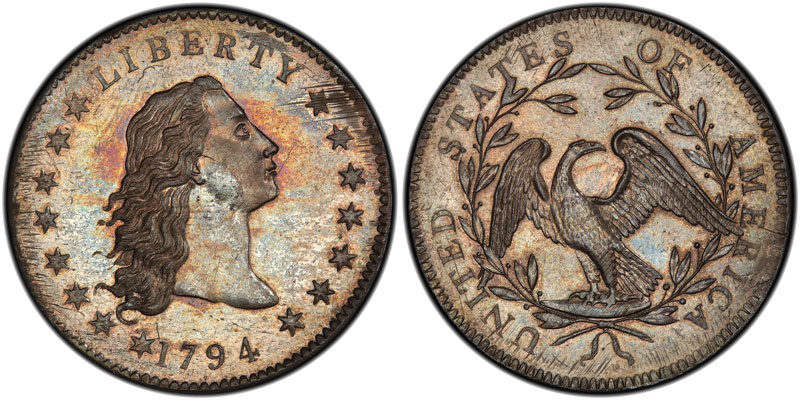
The 1794 Flowing Hair Silver Dollar is believed to be one of the first silver dollars ever struck by the U.S. Mint, marking a foundational moment in the history of American currency.
The coin’s design, featuring Lady Liberty and a majestic eagle, symbolizes the ideals of a fledgling nation. Due to its historical significance and limited mintage, it is one of the most sought-after coins in numismatics.
- A Financial Milestone: In 2013, a specimen of the 1794 Flowing Hair Silver Dollar sold for a jaw-dropping $10 million, making it the most expensive coin ever sold at that time. This sale shifted the dialogue around wealth, as it highlighted that a piece of history could hold immense value beyond conventional financial instruments.
- Impact on Wealth Conversations: The sale demonstrated the increasing willingness of high-net-worth individuals to invest in historically significant and finite collectibles. The record-breaking price invited discussions about the intersection of history, art, and wealth preservation, showing that rare coins could be cultural artifacts as well as financial assets.
4. The $1 Million Sale of the 1913 Liberty Head Nickel
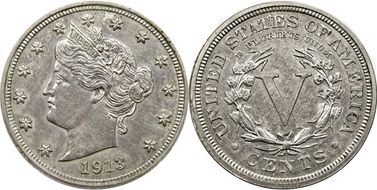
The 1913 Liberty Head Nickel is another iconic coin that altered perceptions of wealth. Only five of these coins are known to exist, making them one of the rarest numismatic treasures.
The coins were minted under mysterious circumstances, and their rarity has been the subject of intrigue and fascination for over a century.
- A Groundbreaking Sale: In 1996, one of these coins sold for $1 million, a moment that drew international attention. It was one of the first times a single coin had reached the million-dollar mark, proving that rare coins could command staggering prices.
- Media Frenzy and Public Awareness: The sale sparked widespread media coverage and interest in coin collecting. For many, it was a revelation that a small nickel could be worth as much as a luxury mansion or a high-end sports car. This event reshaped the conversation about the value of collectibles and the role of scarcity in determining worth.
Also see : 4 Revolutionary Techniques to Identify Undervalued Coins at Auctions
FAQs About Rare Coins and Wealth
1. Why are rare coins so valuable?
Rare coins are valuable for several reasons, including their historical significance, limited mintage, and the stories they tell about the past. The rarity and condition of a coin, along with its demand among collectors and investors, drive its market value.
2. Can investing in rare coins be profitable?
Yes, investing in rare coins can be highly profitable, but it comes with risks. The market for rare coins can be volatile, and prices depend on factors such as economic conditions and collector interest. It’s essential to conduct thorough research or consult a numismatic expert before investing.
3. How do I ensure that a rare coin is authentic?
Authenticity can be verified through reputable grading organizations like the Professional Coin Grading Service (PCGS) or the Numismatic Guaranty Corporation (NGC). These organizations provide expert authentication, grading, and certification services.
4. Where can I buy or sell rare coins?
Rare coins can be bought or sold through auction houses, certified dealers, coin shows, and online platforms.
Reputable auction houses like Heritage Auctions and Stack’s Bowers Galleries are often the best places for high-value coins. Always ensure that you are dealing with trustworthy entities to avoid counterfeit coins.
5. What factors affect the value of a rare coin?
The value of a rare coin is influenced by several factors, including its rarity, historical significance, condition, metal composition, and demand among collectors. Coins with unique features or well-documented provenance tend to command higher prices.
6. How should I store my rare coins?
Proper storage is crucial to maintain the value of rare coins. Coins should be kept in a controlled environment with minimal exposure to light, humidity, and air. Using protective holders or cases and placing them in a safe or a bank’s safety deposit box is advisable.
